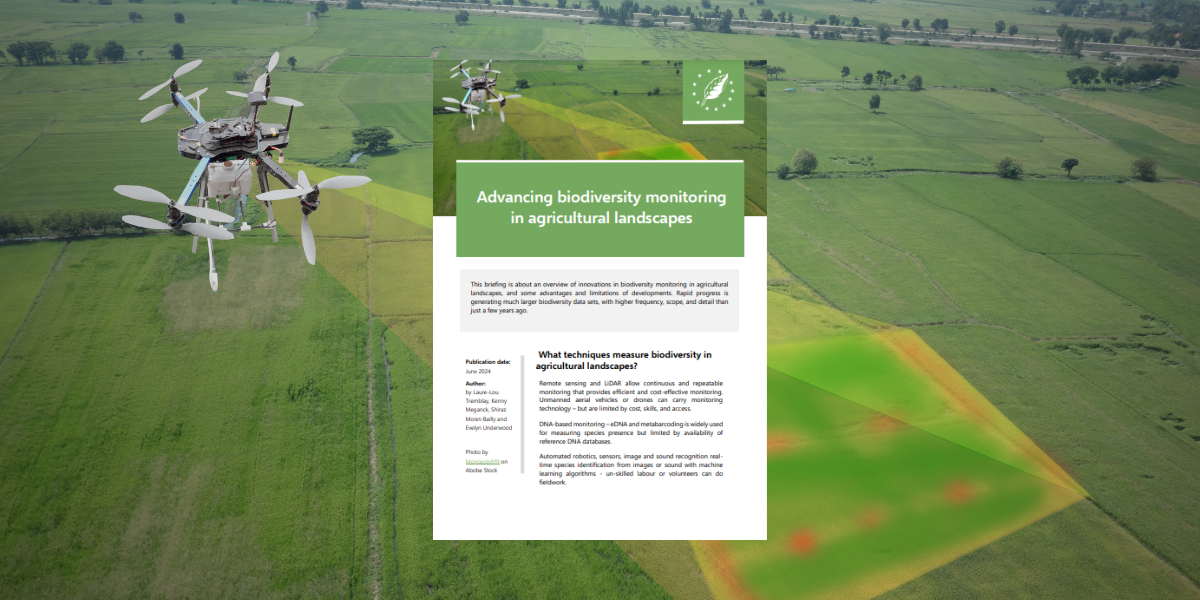AUTHORS: Laure-Lou Tremblay, Kenny Meganck, Shiraz Moret-Bailly, Evelyn Underwood
Monitoring and detection of protected species and overall biodiversity on agricultural land is a necessity to conserve and restore biodiversity in sustainable agriculture. Agriculture is highly dependent on biodiversity services and natural resources in the agricultural landscape. Understanding the impact of land use shifts, land management, pollution, and climate change requires monitoring of species and habitats. Monitoring at a higher spatial scale and over time allows the evaluation of status and trends and so get a better and more timely picture of the impacts of environmental policies.
Rapid progress is being made with innovations in technologies and methods for biodiversity monitoring in agricultural landscapes. These new approaches are generating much larger biodiversity data sets, with higher frequency, scope, and detail than just a few years ago. Some of these innovations are already informing policy or being used for policy implementation; others have the potential to be policy-relevant soon. For example, e-DNA monitoring is contributing to water monitoring for the Water Framework Directive and invasive alien species tracking for the EU Invasive Alien Species Regulation.
This briefing gives an overview of developments and points to advantages and limitations. In particular, it highlights that:
- Using automated technologies avoids surveyor bias, reducing labour costs and providing a partial solution to the decline in taxonomic expertise availability. These technologies are opening opportunities to develop large scale biodiversity monitoring schemes that can process large amounts of data over greatly extended temporal and spatial monitoring scales – day and night, throughout the growing season, and in remote or inaccessible places such as tree canopies.
- Technologies are increasingly available but some need improvements and validation of their reliability before committing to their use in monitoring programmes.
- Technologies supplement rather than replace in situ observations and taxonomic expertise for both scientific and social reasons. For example, automation could unintentionally “lock in” previous biases and errors in taxonomy, and any automation system should have an auditing mechanism with expert supervision to avoid this.
- Innovation is not necessarily high tech and expensive: farmer led scoring and indicator methods are being used for results-based payments in agri-environment schemes and benefit understanding and incentivise improvement.
- New tech raises equality of access issues: governments, agencies, and individuals vary greatly in their ability to access and pay. For the public sector, there is the challenge of paying the costs on a long-term basis.
- More work is needed to encourage biodiversity data sharing and interoperability.
The latest version is available here
Photo by Monopoly919 on Abobe Stock

